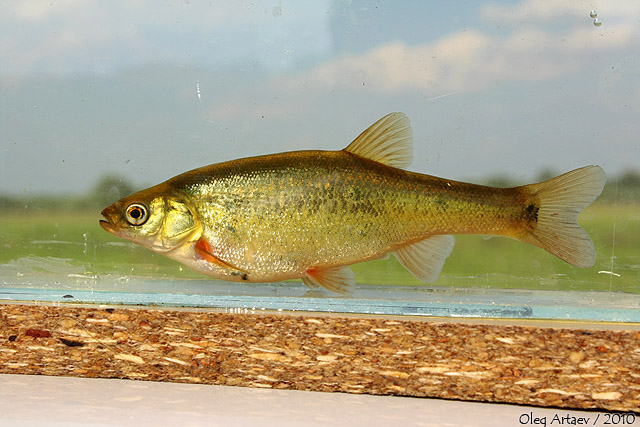| Leuciscidae (Minnows), subfamily: Pseudaspininae |
| 18.5 cm SL (male/unsexed); max.weight: 100.0 g |
|
benthopelagic; freshwater, non-migratory |
| Eurasia: Widespread but highly disjunct range: lakes in Odra, Vistula, Dniepr, Volga (Oka and Kama systems) drainages, isolated localities in Middle Volga, lakes in Arctic Ocean (from Nothern Dvina to Kolyma drainages) and Pacific basins (from Amur to Korea and Japan). |
|
Can be separated from Rhynchocypris czekanowskii by having male genital papilla not long and pointed, and body depth greater than or equal to caudal peduncle length (Ref. 59043). |
| Adults inhabit small lakes, shallow or isolated small bays of larger lakes, swamps, artificial ponds, with abundant vegetation, turbid water, with mud or clay bottom. They prefer to live in still water or slow current. Commonly found in shallows among vegetation in schools of 20-89 individuals. Can survive extreme low oxygen concentrations in summer and winter. Hibernate (in northern regions) during winter or remain inactive at temperatures close to 0°C. Feed on a wide variety of prey, from plankton to benthic animals. Globally not under threat, but some isolated relict populations in Middle Volga and Poland have already been extirpated, are declining or threatened. Several of these populations may possibly represent a distinct species, which, if confirmed, will significantly change the present conservation assessment (Ref. 59043). |
|
Least Concern (LC); Date assessed: 01 January 2008 Ref. (130435)
|
| harmless |
Source and more info: www.fishbase.org. For personal, classroom, and other internal use only. Not for publication.

